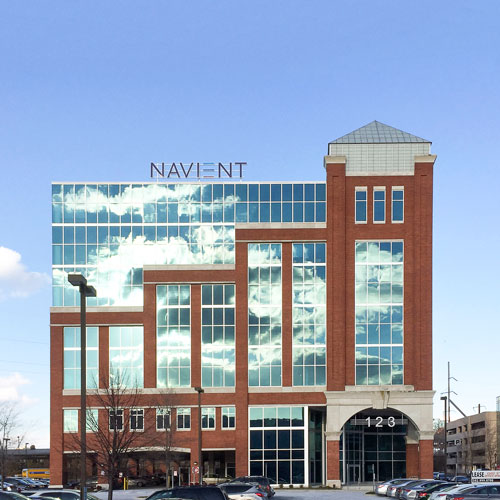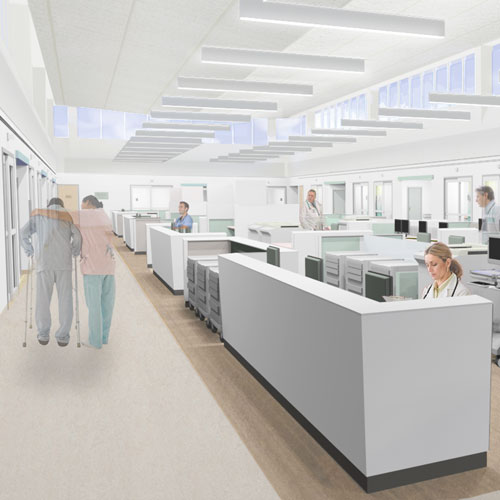More than once in his career, J. J. Smith has found himself in just the right place at just the right time.
As an entry-level architect in Chicago, he got his start at Hartshorne Plunkard Architecture, a young, energetic firm that not only honed his residential design skills but also exposed him directly to developer clients, showed him how to find the best use for a piece of land, and taught him to understand a developer’s financial goals. “It was a great jumping-off point for me—the experience of a lifetime,” Smith says. “I wouldn’t have gotten into the role I’m in today—that of orchestrating the development of major private student apartment complexes—without it.”
As it happens, he was representing his former firm when one of its clients—CA Ventures, also based in Illinois—liked his work enough to offer him a position as a project manager. Intrigued by “an upstart real estate development company with a specific niche,” Smith took the job in 2007. The niche? Off-campus student housing, much of which, nationwide, was in dire need of updating.
“We found that purpose-built student housing, for the most part, had been built in the ’70s and early ’80s,” Smith says. “So, on most major flagship state-school campuses, there was definitely a demand for high-end, modern, furnished student apartments with a heavy dose of amenities in a roll-out-of-bed location.”
The demand put CA Ventures (known originally as Campus Acquisitions) at the forefront of one of the few recession-proof real estate markets in 2008 and 2009. Smith quickly learned that his lack of a business background could inhibit his growth in real estate, so he went back and got his MBA—with a focus on finance and real estate—at night while overseeing about $200 million in development during the recession. And since that time, his company has built nearly $2 billion worth of apartments on about 30 different college campuses across the United States.
Core-infill projects—aka, mostly high-density, vertical structures in pedestrian locations—have been the meat and potatoes of CA Ventures’ work all along. Competing student-housing developers have traditionally focused more on garden-style apartments on the outskirts of campuses, but now they’re seeking core-infill projects as well, and CA Ventures has the clear advantage because it’s been in the market longer. “The pendulum has swung, but we’ve always stuck to core-infill developments, where location is your number one amenity,” Smith says. “They allow us to thrive and find pipeline opportunities.”
The company has also found great opportunities in Canada, where typical collegiate-housing setups are as much as 20 years behind those of the United States. “Most Canadian and South American universities either have no student housing or very little of it,” Smith says. “If the typical US university houses 30 percent of the student population in its dormitory system, the typical Canadian school houses less than 10 percent.”
No matter where CA Ventures builds, Smith says, the company remains open to partnerships with those who have the right land—and a vision—but who don’t have the means to finish their projects alone. “Understanding partners’ desires and contributions gives us more exposure to opportunities,” he says. “I think it also gives us another competitive edge: our ability to work with anyone.”
_____________________________________________________________________
Downtown Chicago
With the help of $10 million in federal historic tax credits, CA Ventures conducted a sweeping renovation of the Gibbons and Steger office buildings—historical landmark-status properties that were in disrepair and poorly occupied—to turn themw into Infinite Apartments.
Following a fire on the higher floors, the Steger building’s original upper-story terra cotta cornice had been replaced by utilitarian brown face brick in the 1980s. So, equipped with the old architectural drawings, CA Ventures replicated the highly ornate cornice with glass-fiber- reinforced concrete. Additionally, the firm restored a small structure known as Pickwick Stable—rumored to be the oldest standing structure in the Chicago Loop—in the once-dark alleyway between the two midrises. Pedestrians can now walk down Pickwick Place, an inviting brick-paved courtyard leading to the new Asado Coffee Shop.


_____________________________________________________________________
Uncommon
Eugene, OR
A four-story medical office building built in the late 1960s used to occupy Uncommon’s site. It had become outdated and sparsely occupied, though, so CA Ventures worked to negotiate the termination of the building’s remaining office leases, and it helped the tenants relocate in order to demolish the structure on schedule.
It then built Uncommon, which today sits just a few blocks from the University of Oregon campus and near the many retail, nightlife, and dining options of downtown Eugene. The core-infill property has wood-clad exterior façades that blend with the existing aesthetic of the city.


_____________________________________________________________________
 Next
Next
Tucson, AZ
Built directly across the street from the University of Arizona, adjacent to a light-rail transit line, Next stands on land formerly occupied by a single-story retail strip mall that was filled with quick-service restaurants. It’s a prime example of a “highly amenitized,” core-infill student apartment building.
Constructed carefully in a historic neighborhood, its design features floor-to-ceiling windows and a sleek metal-panel façade, and the building itself contains a rooftop glass-edge pool, an outdoor grilling terrace, a sundeck, a state-of-the-art fitness center, tanning beds, a steam room, and social and study lounges. Each apartment has stainless-steel appliances, quartz countertops, modern European cabinetry, a tiled shower with a glass door, modern furnishings, a flat-screen TV, and a washer and dryer.






 Next
Next

